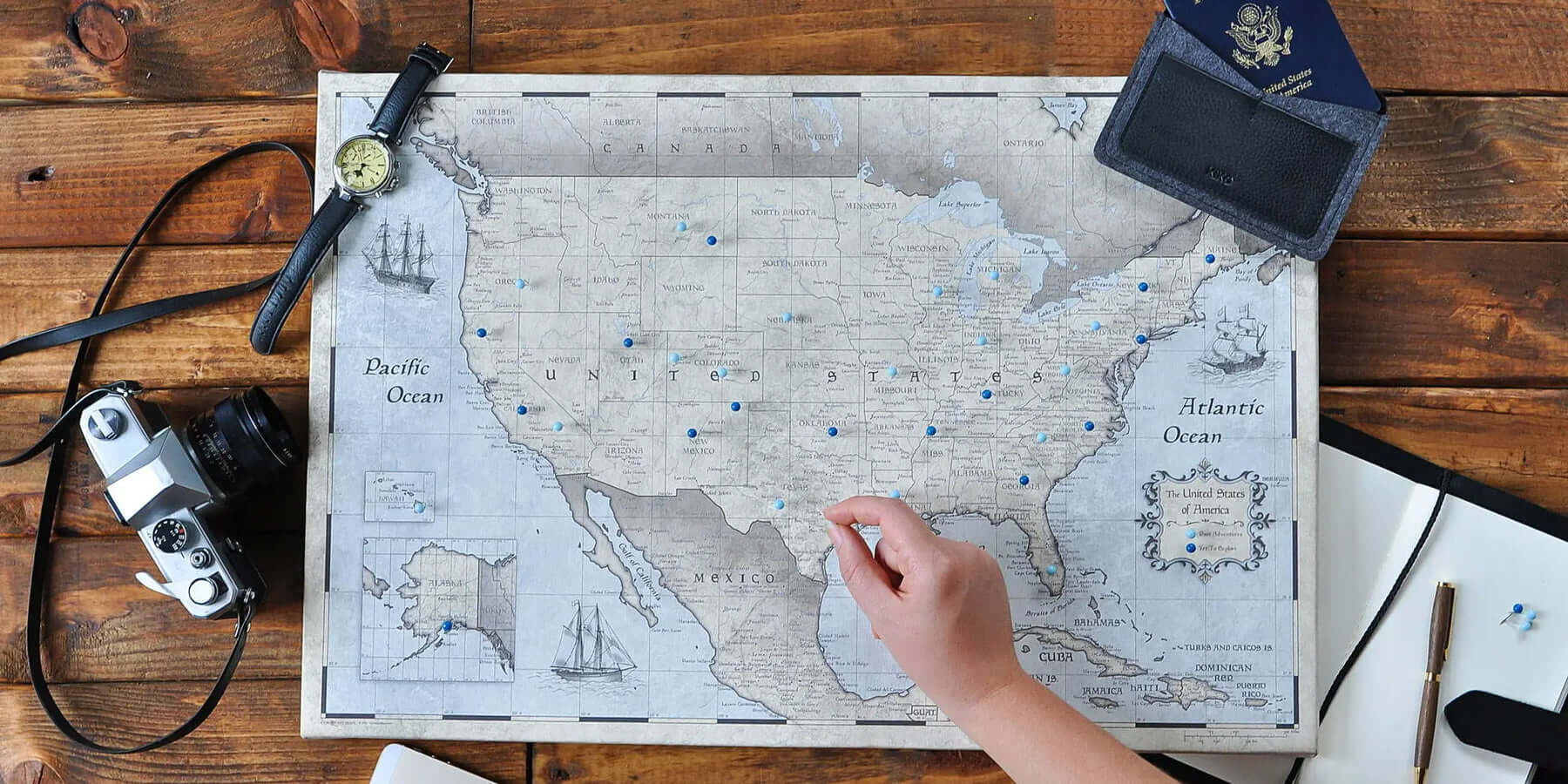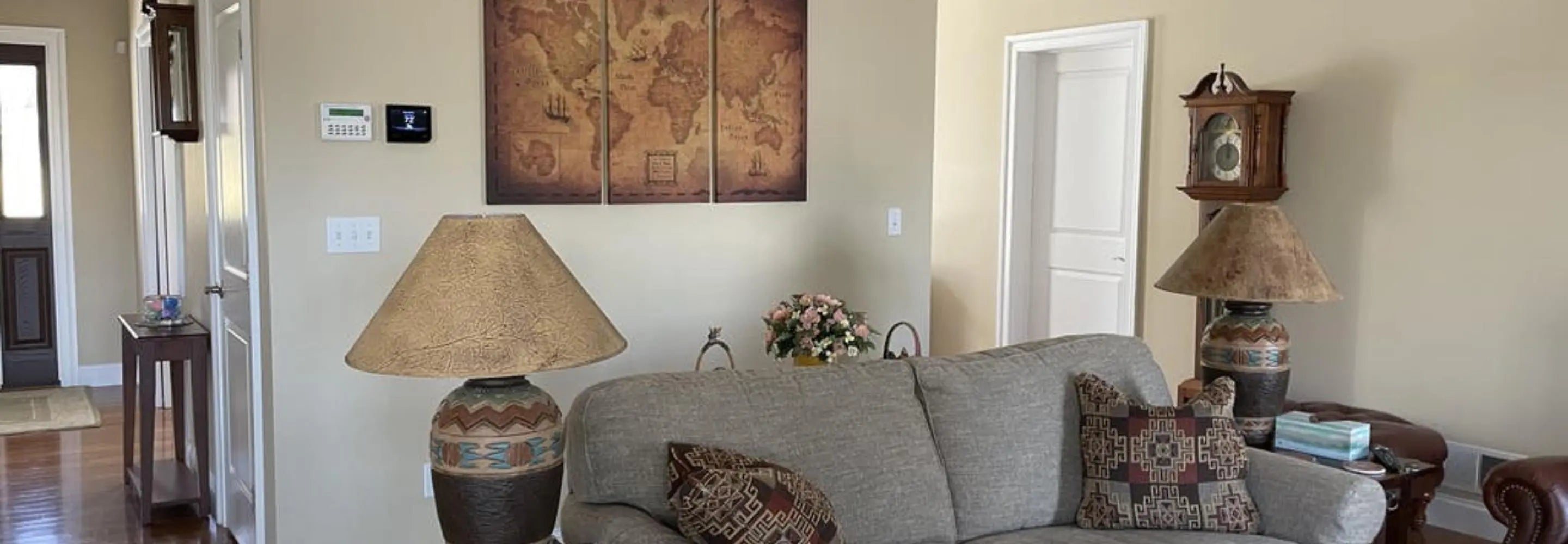Do you have a bucket list of dream destinations and experiences that you're constantly swooning over, but you just never seem to check any off? Well, a dream without a plan is just a wish - and we're here to fix that! Let's make those dreams a reality!
Good news! You don’t need a million bucks, 2 months of vacation time or elite airline status to make your travel dreams come true. With our simple 10-step guide to success, you will be on the path to achieving all of your travel goals and soaking up all that the world has to offer!
1. Set goals that motivate you
Take a second and ask yourself: What is my motivation for prioritizing travel as an important part of my life? Is it to experience new places and cultures? To discover my passion? To escape from the daily grind? To jump outside of my comfort zone? Something else?
The answer is different for every traveler. Whatever fuels your desire for seeing the world, be sure it is kept at top of mind each day. A push pin map with all of your dream destinations pinned can help achieve this!
2. Dream big!
Take an afternoon to sit down and create a “Bucket List of 100 Dreams” - a completely unedited list of 100 things you would like to do in this life. The sky's the limit here so aim for goals a little out of reach.
This’ll be tough - and that’s the point! The beginning of the list may be loftier, long term dreams. But by the last third it might be simpler things like visiting a state park an hour away. Doable getaways that you could accomplish on a lazy weekend!
3. Narrow it down
Take a look at all of the goals on your bucket list. Now choose one of the places or experiences on your list and commit to it. When deciding which goal to tackle first, you can use the below questions to narrow it down and prioritize your goals:
- Which of the destinations is closest to me?
- Which trip is the least expensive?
- Which trip would be the easiest for me to take right now?
- If I could only visit one of these places before I die, which one would I choose? With this question you’re pinpointing which trip you’re most passionate about.
4. Turn your excuses into actionable steps
We’ve all heard (or even used) the excuses:
I don’t have enough money to travel.
I can’t get enough time off work to travel.
I don't have anyone to travel with.
Squash those excuses and replace them with simple tasks:
- I will create a budget plan to save the money I need to take this trip.
- I will plan my time off work in advance. If you can’t find the time to travel, you likely need to reassess your priorities to fit travel into a busy life.
- I will find a tour company that caters to solo travelers if I can't find a travel companion and don't want to go solo.
5. Set SMART travel goals
It's important to identify not just the difference between where you are and where you want to be, but to create a step by step plan to bridge that gap. Set SMART goals which give you a direction and help you organize and reach your goals. To make sure your goals are achievable, each one should be:
Specific
Your goal should be clear and well-defined so that you can focus your energy on achieving it.
Ask yourself: Who, what, where, when and why?
Instead of saying “I want to travel more” or “I want to go back to Europe," which are vague goals, clarify where, when and with who you want to go. An example is: “I want to visit Paris with my boyfriend for a week in May to celebrate our anniversary.”
Measurable
It's important to have measurable amounts and dates attached to your goals so that you can track your progress and stay motivated, while feeling the excitement as you inch closer to your goal.
Ask yourself: How will I know when I have reached this goal?
Instead of “I want to stay for a week and spend less than $5,000” make your goal more quantifiable like “I want to stay for 8 days, 7 nights and spend xxx on flights, xxx on accommodations and xx on experiences.”
Achievable
The goal should challenge you but not be entirely out of reach. It should be realistic and attainable to be successful.
Ask yourself: Do I have the resources and capabilities to achieve the goal? If not, what am I missing?
Choose a realistic trip to focus on first based on your current income and circumstances (vacation time, visas, distance, cost of flights, etc)
Relevant
This step is about ensuring that your goal is important to you and that it also aligns with your other life goals goals.
Ask yourself: How much does this matter to me and is it worth the time and effort? Is it significant to my life?
Consider your travel style and how long you would want to spend in each destination. Does it make more sense for you to take a one-week 5-star vacation in Bali or a 6-month budget backpacking trip around South America?
Time-bound
Your goal should have a clearly defined timeline including not only your travel dates but the stages of saving, planning and booking your trip and milestones for each. This step helps to prevent everyday tasks from taking priority over your longer-term goals.
Ask yourself: Is my timeline realistic while also creating urgency?
A good example is: We can save $3,000 in 6 months but need $1,000 for flight by January, $1,000 for accommodations by February and to book our activities by April."
6. Write it down
Did you know that you are 42% more likely to achieve your goals if you write them down? This makes the goal real and tangible, taking the trip from abstract and makes it concrete.
As you write, use the power word "will" instead of "would like to" or "might." This way you can visualize yourself achieving the goal. Hang your goals up on your fridge or mirror so that they are top of mind every day.
7. Immerse yourself in your goal
To keep yourself motivated for saving and planning for your travel goals, immerse yourself in them!
Make the inspiration visual! Pin your next destination on your map with a heart pin and add inspirational photos to your matching pin board.
Create a vision board or Pinterest board with photos and blog posts about your dream destination. Surround yourself with people who have similar goals in your friend circle or in a Facebook community such as For The Love of Travel.
8. Tell people
Accountability is key! Sharing your travel goals with others increases your chances of sticking to them. And better yet, find someone to join you in your travel goals and you're in it together!
9. Take the first step
A journey of a thousand miles begins with a single step! Then on to the next step… and the next... If you try to conquer everything all all at once, you may get overwhelmed and give up. Taking things one step at a time keeps things manageable - and achievable!
Remember, goal setting is an ongoing process, not just a means to an end. Build in reminders to keep yourself on track, and set aside time to review your progress.
10. Celebrate and repeat!
So you saved the money, booked the flight, planned the experiences and are off on your adventure? Congrats! Take some time to celebrate and reflect - then get to work on that next travel goal on your list!
We hope you found this guide useful to make those dream trips a reality! What is your approach to tackling your travel goals? Share them in our Facebook community!









Share:
20 Travel Tips for Busy People: How to Fit Travel Into Your Busy Schedule and Achieve Work-Life Balance
The ultimate guide to packing for your next trip